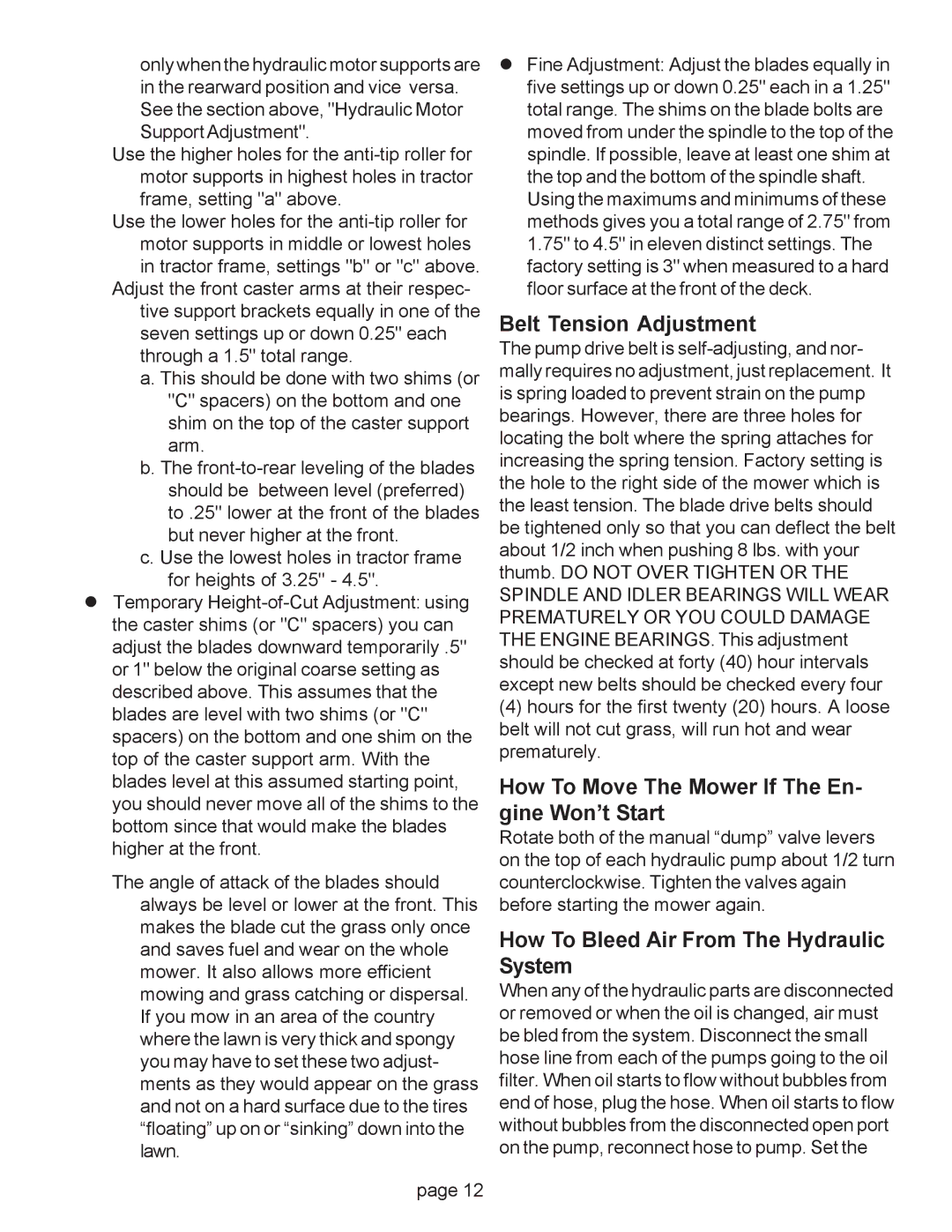only when the hydraulic motor supports are in the rearward position and vice versa. See the section above, "Hydraulic Motor Support Adjustment".
Use the higher holes for the
Use the lower holes for the
Adjust the front caster arms at their respec- tive support brackets equally in one of the seven settings up or down 0.25" each through a 1.5" total range.
a. This should be done with two shims (or "C" spacers) on the bottom and one shim on the top of the caster support arm.
b. The
c. Use the lowest holes in tractor frame for heights of 3.25" - 4.5".
Temporary
The angle of attack of the blades should always be level or lower at the front. This makes the blade cut the grass only once and saves fuel and wear on the whole mower. It also allows more efficient mowing and grass catching or dispersal. If you mow in an area of the country where the lawn is very thick and spongy you may have to set these two adjust- ments as they would appear on the grass and not on a hard surface due to the tires “floating” up on or “sinking” down into the lawn.
page 12
Fine Adjustment: Adjust the blades equally in five settings up or down 0.25" each in a 1.25" total range. The shims on the blade bolts are moved from under the spindle to the top of the spindle. If possible, leave at least one shim at the top and the bottom of the spindle shaft. Using the maximums and minimums of these methods gives you a total range of 2.75" from 1.75" to 4.5" in eleven distinct settings. The factory setting is 3" when measured to a hard floor surface at the front of the deck.
Belt Tension Adjustment
The pump drive belt is
(4)hours for the first twenty (20) hours. A loose belt will not cut grass, will run hot and wear prematurely.
How To Move The Mower If The En- gine Won’t Start
Rotate both of the manual “dump” valve levers on the top of each hydraulic pump about 1/2 turn counterclockwise. Tighten the valves again before starting the mower again.
How To Bleed Air From The Hydraulic System
When any of the hydraulic parts are disconnected or removed or when the oil is changed, air must be bled from the system. Disconnect the small hose line from each of the pumps going to the oil filter. When oil starts to flow without bubbles from end of hose, plug the hose. When oil starts to flow without bubbles from the disconnected open port on the pump, reconnect hose to pump. Set the
